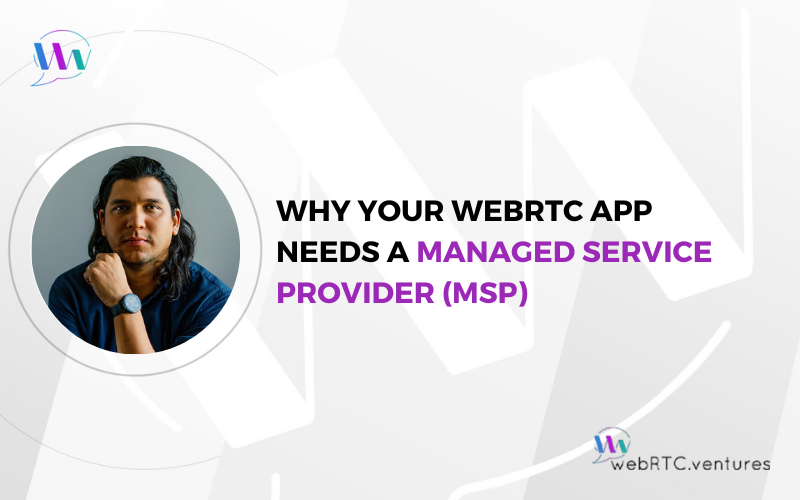Once your WebRTC application is built and tested, the hard work is not over. Your DevOps strategy for monitoring and managing your application’s performance will either become a strategic asset to your organization, or the weight that holds you back.
In this series of posts, we will take a look at the role of an Managed Service Provider (MSP) in optimizing tech infrastructure, the key components of an MSP implementation (think robust ticketing, smoke texts, automated load testing, performance optimization, security and compliance, disaster and recovery, continuous monitoring, and more), getting ready for an MSP, and why expertise with WebRTC deployments is essential for an WebRTC application’s MSP team.
Let’s get started.
What is a Managed Service Provider?
A Managed Service Provider (MSP) offers support of a client’s IT or application infrastructure and end-user systems, often under a subscription-based model. This allows the client to focus on their business, while leaving the management and maintenance of their technology to the experts.
Why use an MSP for your WebRTC Application?
Managed Service Providers offer a wide range of benefits, many of them even more important for real-time applications.
- Application Infrastructure Management and Optimization. MSPs ensure that your application’s servers, databases, and network components are properly configured and maintained for optimal performance and scalability. This ensures a smooth user experience and reduces the chances of downtime.
- Proactive Monitoring and Issue Resolution. MSPs employ monitoring tools to keep a close eye on your real- time application’s performance – in real-time! We can quickly identify and address any issues that may arise, minimizing downtime and ensuring a reliable connection and communication experience for users.
- Security and Compliance. As WebRTC applications involve real-time communication and data transfer, security is a critical concern. MSPs specialize in implementing robust security measures, including encryption, firewalls, and intrusion detection systems, to protect the application from potential cyber threats. Additionally, they can assist with compliance requirements, ensuring that the application adheres to relevant data protection and privacy regulations.
- Scalability and Flexibility. WebRTC applications may experience varying levels of traffic, depending on user demand. An MSP can help the application scale its infrastructure up or down based on usage patterns, ensuring that it can handle peak loads without performance degradation. This scalability allows the application to accommodate growth and adapt to changing needs.
- Regular Updates and Maintenance. MSPs can handle routine maintenance tasks, such as software updates, which happen often with webRTC, security patches, and backups. Regular updates ensure that the application remains up-to-date with the latest features and security fixes, reducing vulnerabilities and improving performance.
- Load Balancing and Redundancy. To maintain high availability and prevent single points of failure, MSPs set up load balancing and redundancy mechanisms for the WebRTC application. This ensures that if one server fails, the traffic is automatically redirected to alternative servers, minimizing service disruptions.
- Expert Technical Support. In case of any technical issues or user inquiries, MSPs offer dedicated technical support teams with the necessary expertise to resolve problems promptly. Tiered support options allow you to choose the level of service you need.
- Cost Optimization. Instead of investing in building and maintaining an in-house IT infrastructure and support team, rely on your MSP’s expertise and services, paying for only the resources you need.
In our many years of building video applications, we’ve developed a good deal of expertise managing infrastructure. We’d love to apply that to your application. Contact us today about managed services!











